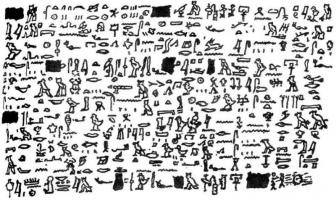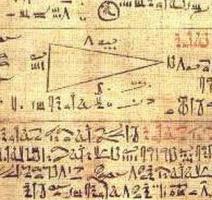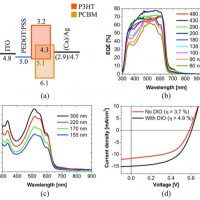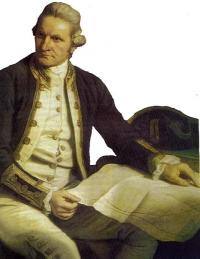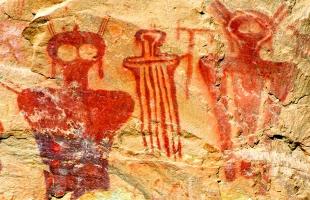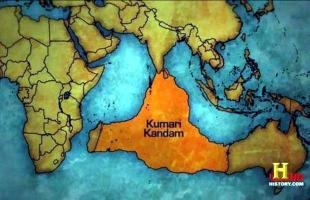The Edwin Smith papyrus
The medical papyrus of Edwin Smith is probably the only Egyptian papyrus that is the most distinctive and perhaps comes closest to our modern conception of "medicine." For long time most of the discovered old documents deal with recipes and medicines. The Smith Papyrus is a kind of treatise on surgery.
It was published in 1930 by Prof. James Henry Breasted, director of the Oriental Institute at the University of Chicago with a complete transliteration, translation and commentary. The name of this important document comes from Edwin Smith, an American collector who bought it from a junk dealer in Luqsor around 1862. Today it is preserved in the Hall of Rare Books at the New York Academy of Medicine.

Datable to around 1530 B.C. (18th dynasty, reign of Amenhotep I), but probably copied from an original at least 1,000 years older, in its 4.70 m length it lists on the verso a series of incantations and recipes for medicines and on the recto 48 cases, of which the last one is incomplete, mostly concerning traumatology and orthopedics, written in hieratic.
The cases are treated with great rigor:
- clinical examination,
- diagnosis, divided into favorable ("an evil I will cure"), uncertain ("an evil I will fight"), unfavorable ("an evil that cannot be cured"),
- treatment, sometimes including subsequent treatments.
- glosses. This document includes 69 important glosses, thanks to which it was possible to understand the meanings of the "medical" terms mentioned in the treatment of cases.
here I propose a translation of the first case presented in the papyrus.
Title
A head wound penetrating to the bone.
Examination
If you were to examine a man who presents a head wound that penetrates to the skull bone, you should say concerning this, "one who presents on the head a wound without a lesion having separations (two flaps), nor a cut, although there is a penetration to the skull's bone, you should palpate the wound (apply your hands)". You should note that his skull is free of injury and say that he should not have any perforation, fracture or collapse.
Diagnosis
You will have to say about this, "one who presents on the head with a wound without flaps or cuts, even if it reaches the skull bone, is an evil that I will treat."
Treatment
You will have to apply fresh meat for the first day and then apply gauze soaked in fat and honey every day until healed.
Glossa
"if you were to examine a man," means that you must proceed as when you count something, with a special vessel made for measuring and as when you feel with the fingers of your hand to learn to recognize something. Disease is counted as you count objects with an instrument, as if you were measuring a man's disease.
"Of the way of knowing the actions of the heart." There are channels (the vessels of the heart that go to each member).
If the priests of Sekhmet or any physician, placed their hands or fingers on the head (or the back of the head), over the two hands, over the wrist, over the two feet, they would always measure the heart, for it is behind it that all the vessels originate and its pulsation is in every vessel of every member.
The papyrus suggests to examine each wound by feeling with the fingers the vessels of the head and the back region of the head and the two feet, so as to recognize the signals that originate from within. It means measuring, so that we know what is going on inside.











